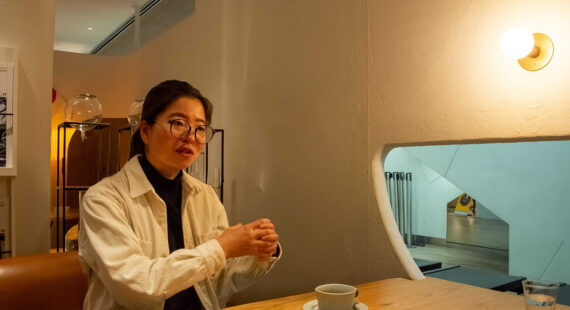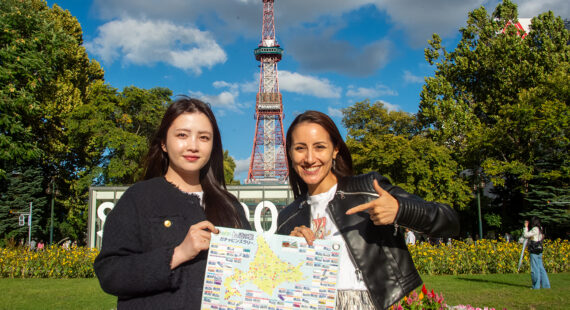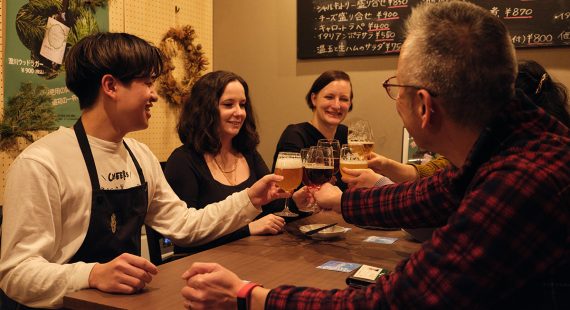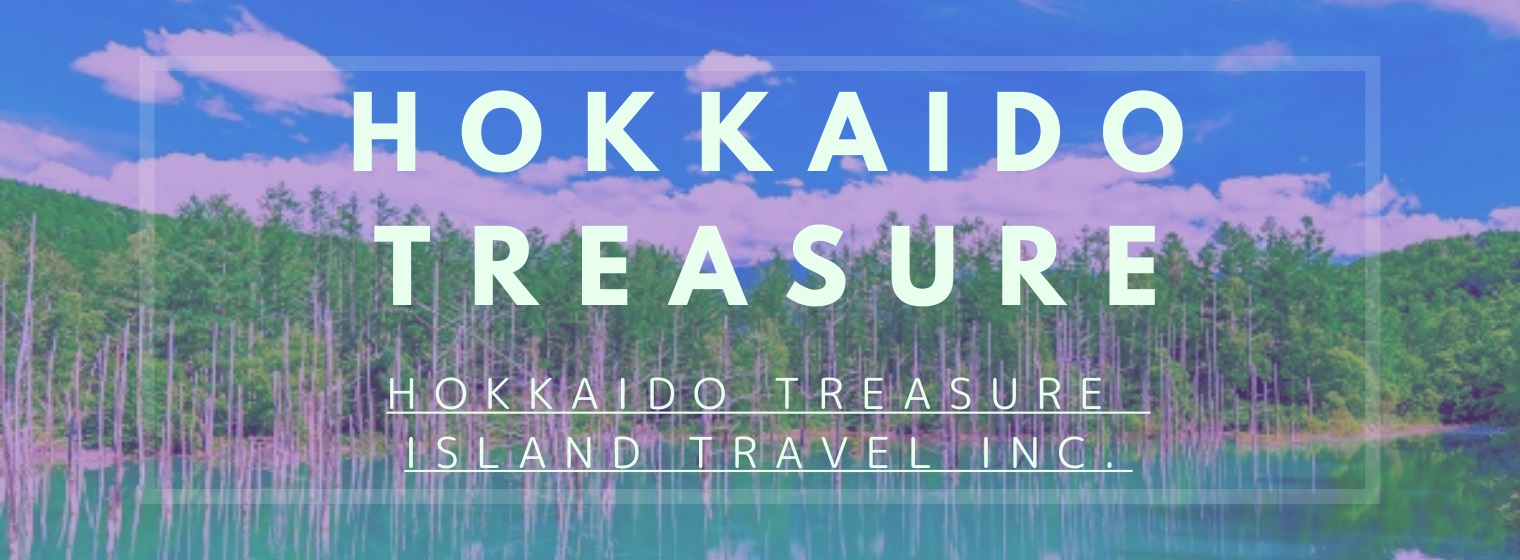(Written by Yuko Fujimori)
Table of Contents:
1. What is the Hokkaido Garden Path?
2. The Hokkaido Garden Path locations
3. Outline of the eight gardens
1) Daisetsu Mori-no-Garden (Daisetsu Forest Garden)
2) Ueno Farm
3) Kaze-no-Garden (Windy Garden)
4) Tokachi Millennium Forest
5) Manabe Garden
6) Tokachi Hills
7) Shichiku Garden
8) Rokka Forest
4. Conclusion
1. What is the Hokkaido Garden Path?
After the long, snow-covered winter, the fresh green season finally comes to Hokkaido. Various types of flowers begin to bloom all at once in the latter part of April, and in May the island becomes a treasure trove of flowers. Hokkaido attracts many travelers who wish to avoid the summer heat since its summers are less humid and much more comfortable than those of Honshu, the Japanese mainland. The roads are wide for snowfall in winter, so visitors can enjoy a pleasant drive while enjoying the magnificent scenery.
Autumn in Hokkaido is short, but the autumn leaves and autumn flowers are also a fine sight to behold. It is also the harvest season. Freshly harvested vegetables such as potatoes and pumpkins, Hokkaido’s specialties, can be enjoyed at restaurants along the Garden Path.
In recent years, green tourism and adventure travel have been attracting attention as they enable visitors not only to visit tourist attractions but also to spend time relaxing and interacting with nature and local people that are unique to the area. Unlike Japan’s main island of Honshu, which is in the temperate zone, most areas of Hokkaido belong to the subarctic zone and have very different fauna and flora to Honshu. There are many unique gardens that take advantage of Hokkaido characteristics. The Garden Path is a 250-km flower tour that connects eight of these gardens that are particularly worth seeing. By touring this route, visitors can efficiently enjoy the beautiful gardens of Hokkaido, as well as cafés, restaurants, shops and quality hotels that are located in the vicinity of the gardens and the route, offering a comfortable trip to enjoy beautiful gardens and meals made from local products.
2. The Hokkaido Garden Path locations
The eight gardens of this path are scattered from north to south from the center of Hokkaido. Starting from the north with (1) Daisetsu Mori-no-Garden (Daisetsu Forest Garden) at the foot of the Daisetsuzan mountain range, which is known as the roof of Hokkaido, followed by (2) Ueno Farm in the northern city of Asahikawa, and (3) Kaze-no-Garden (Windy Garden) in Furano, located in the center of Hokkaido and famous for its beautiful lavender fields, and ending with five gardens in the Tokachi area with its magnificent rural scenery. In Obihiro, the central city of this region, there are (4) Tokachi Millennium Forest overlooking the majestic Hidaka Mountains, (5) Manabe Garden with Japan’s first conifer garden, (6) Tokachi Hills on a hill near the Obihiro downtown, (7) Shichiku Garden full of flowers that was inspired by a woman’s dream, and (8) Rokka Forest with northern wild flowers that was created by a famous Hokkaido confectionery manufacturer, Rokka-Tei.
This year (2024) marks 15 years since the Garden Path was established. The facilities in each garden have been enhanced.
Of course, it’s up to you which garden you would like to start from. The flowering season in Hokkaido is from May to October. Each garden is unique, full of seasonal flowers, and is sure to be a satisfying sight to see.
3. Outline of the eight gardens
1) Daisetsu Mori-no-Garden (Daisetsu Forest Garden)
Flower gardens at the foot of the Daisetsu mountain range, the “playground of deities”

The Daisetsu mountain range is called Kamui Mintara meaning “playground of the deities” in Ainu, the language of Hokkaido’s indigenous people. It is a mountainous area located in north-central Hokkaido. Daisetsu Mori-no-Garden is a vast garden built on hills overlooking these mountains.
It consists of three areas: Forest Garden, where more than 900 varieties of colorful perennial plants are in bloom; Forest Guest House, where visitors can relax surrounded by natural trees and lovely wildflowers; and Forest for Play, where children and adults can enjoy playing while communicating with nature.
From late June to mid-July, the Himalayan blue poppy” (meconopsis) is in bloom. This flower is a rare species that only blooms at high altitudes and in cool climates like those of this area.
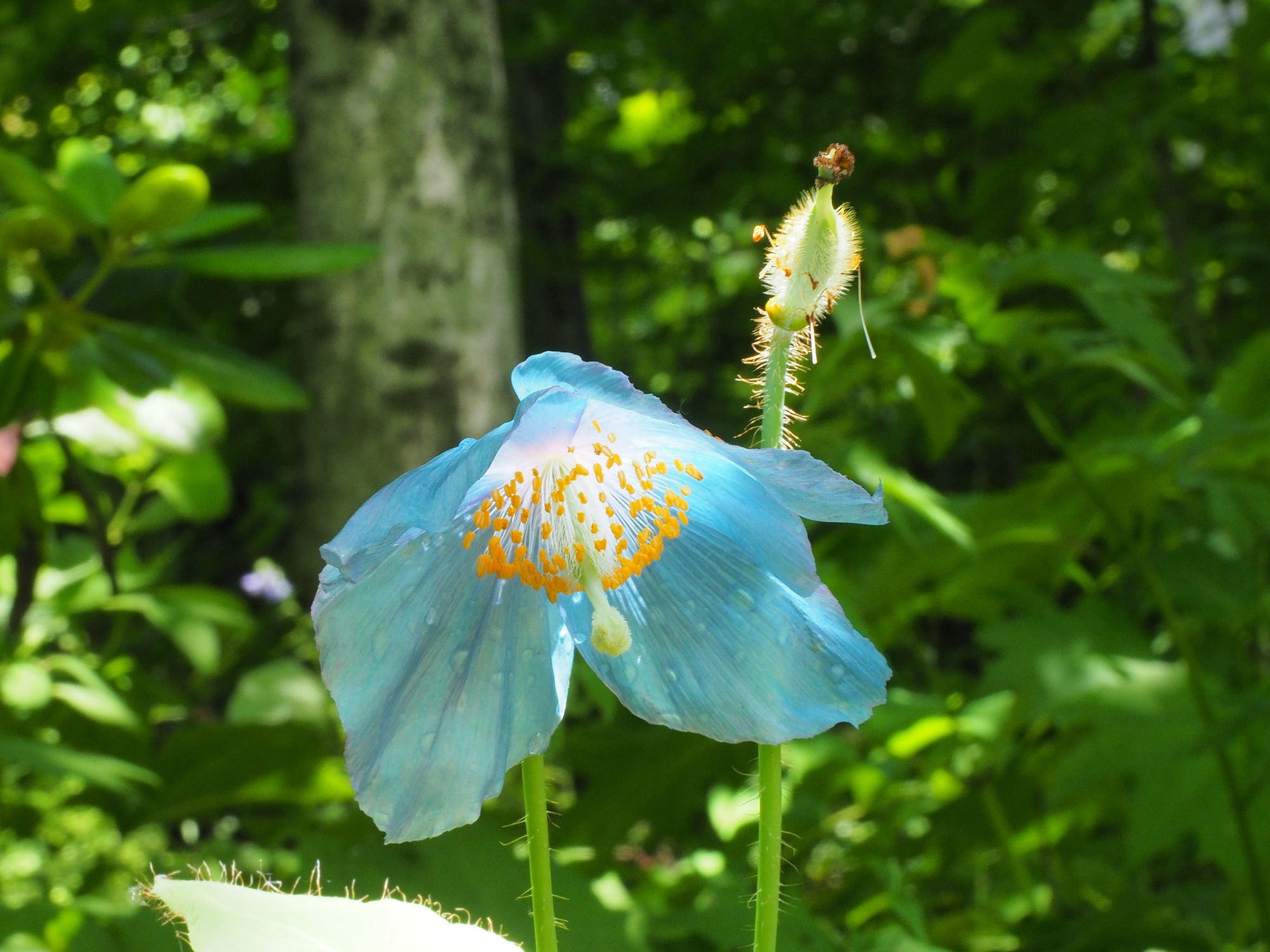
Visitors can take a rest at the café inside the park. The garden restaurant Fratello di Mikuni and the auberge Villa, both produced by renowned French chef Kiyomi Mikuni who was born in Hokkaido, offer seasonal Hokkaido cuisine using fresh ingredients from Hokkaido.
・ May – June: Trillium camschatcense (obanano-enreiso), tulips
・ July – August: Himalayan blue poppies, digitalis, campanulas
・ September – October: Japanese anemones, toad lilies, Autumn crocuses


2) Ueno Farm
The Hokkaido Garden created by a leading Hokkaido gardener
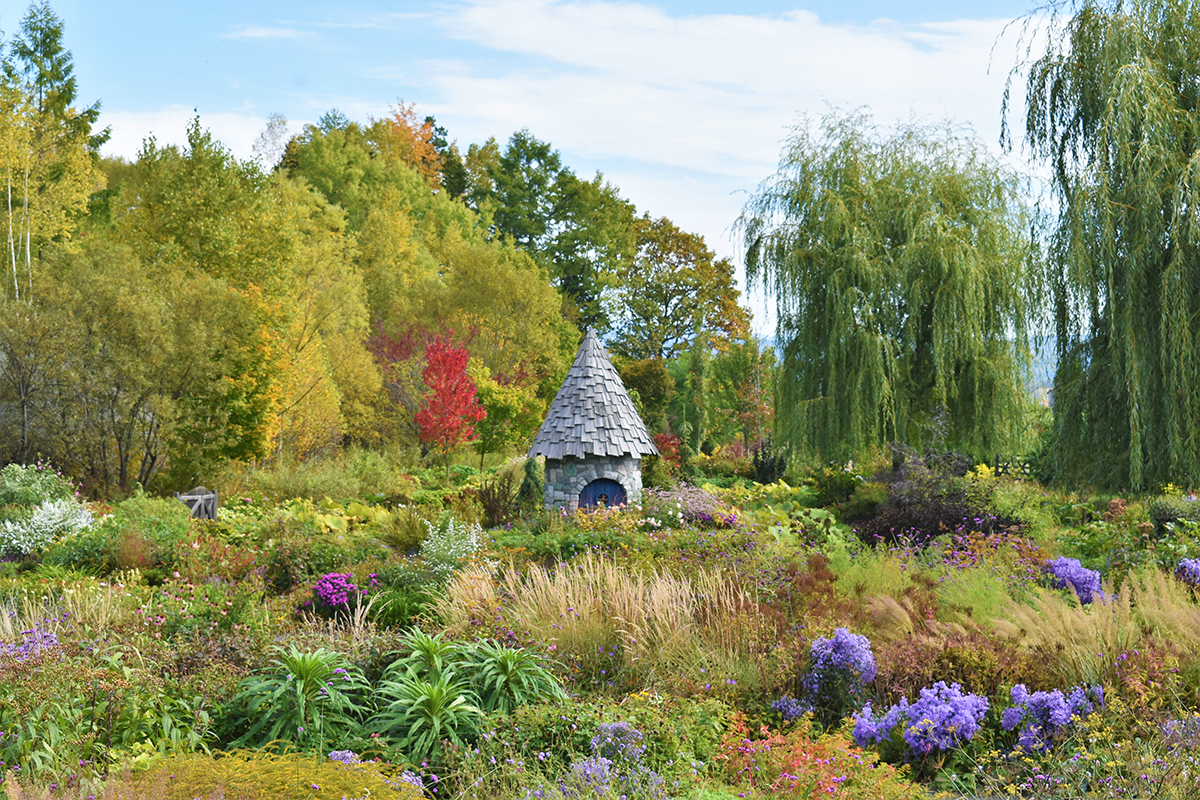
Ueno Farm is a pioneer of tourist gardens in Hokkaido, and is known in Japan as a mecca for gardeners. Ms. Yuki Ueno, an up-and-coming garden designer from Hokkaido, was born into the sixth generation of a rice farming family in Asahikawa, a northern city of Hokkaido. She traveled to England to study gardening when she was 25. After returning to Japan, she started to make this garden with the help of her family. She opened this garden to the public in 2001.
At first, she wanted to create an English-style garden in Hokkaido, which is a type of garden often seen in England that incorporates plants, flowers, and trees in their natural state. It is a gardening method that values the beauty of nature as it is and avoids excessive human intervention. But her hometown of Asahikawa is a very cold place, with temperatures as low as minus 20 degrees Celsius in winter. It was difficult to grow plants that would thrive here. The climate is different from that of England and, after facing many problems, she finally came up with the idea of creating a garden that is only possible in Hokkaido.
She considered a Hokkaido garden to be one created by plants that grow in the climate of Hokkaido, with its unique northern flowering season and vividly colored flowers. She then began to develop a garden centered on the seasonally flowering perennial grasses.
The garden is divided into nine areas, each with a different atmosphere to delight the visitors.
The Gnome Garden is a natural landscape garden with Hokkaido plants and flowers spread out around a cute little hut that looks like it is inhabited by a gnome. It is said that garden gnomes sneak in at night here to help with the garden work.

The Mirror Border, as the name suggests, is a strip of flower beds with symmetrical plantings, like a mirror match. The flowers in bloom change one after another depending on the season, so visitors can enjoy a different look each time they visit.
In addition to this, the 7,000-m² garden has various types of areas with more than 1,000 varieties of flowers and grasses. There is also NAYA café, a renovated farm barn, and a garden store.
・May – June: Tulips, daffodils, lupines, and hyacinths
・July – August: Roses, campanulas, delphiniums
・September: Rose hips, asters, and Japanese hibiscus

3) Kaze-no-Garden (Windy Garden)
A garden produced for a TV drama from Hokkaido
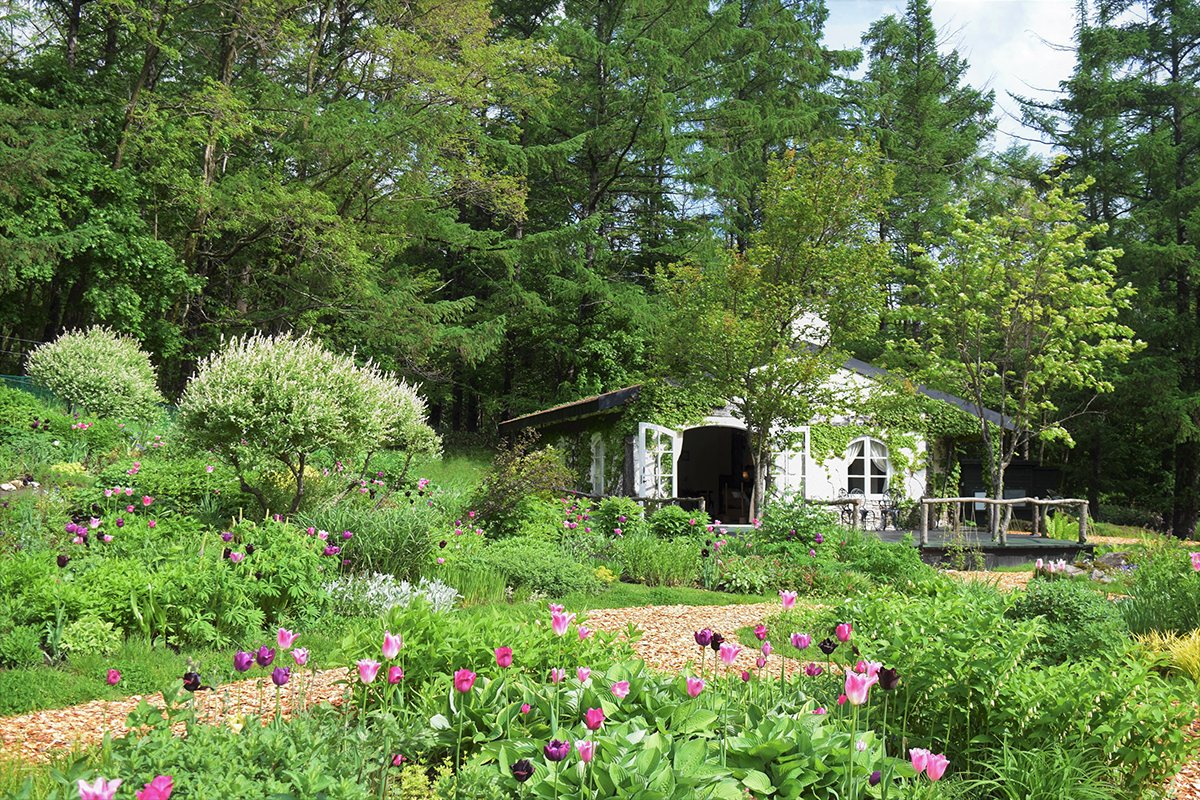
This British garden was created as a setting for the Japanese TV drama “Kaze-no-Garden (Windy Garden),” broadcast in 2008. The script for the drama was written by So Kuramoto, a well-known screenwriter living in Furano, and the garden was landscaped by Yuki Ueno, a famous garden designer at Ueno Farm. Located on the grounds of the New Furano Prince Hotel, the garden has been open to the public since 2009, after the broadcast finished, and visitors can tour not only the garden but also the interior of the house used for filming.
In the main garden, some 450 species of flowers, mainly perennial plants, are in bloom.
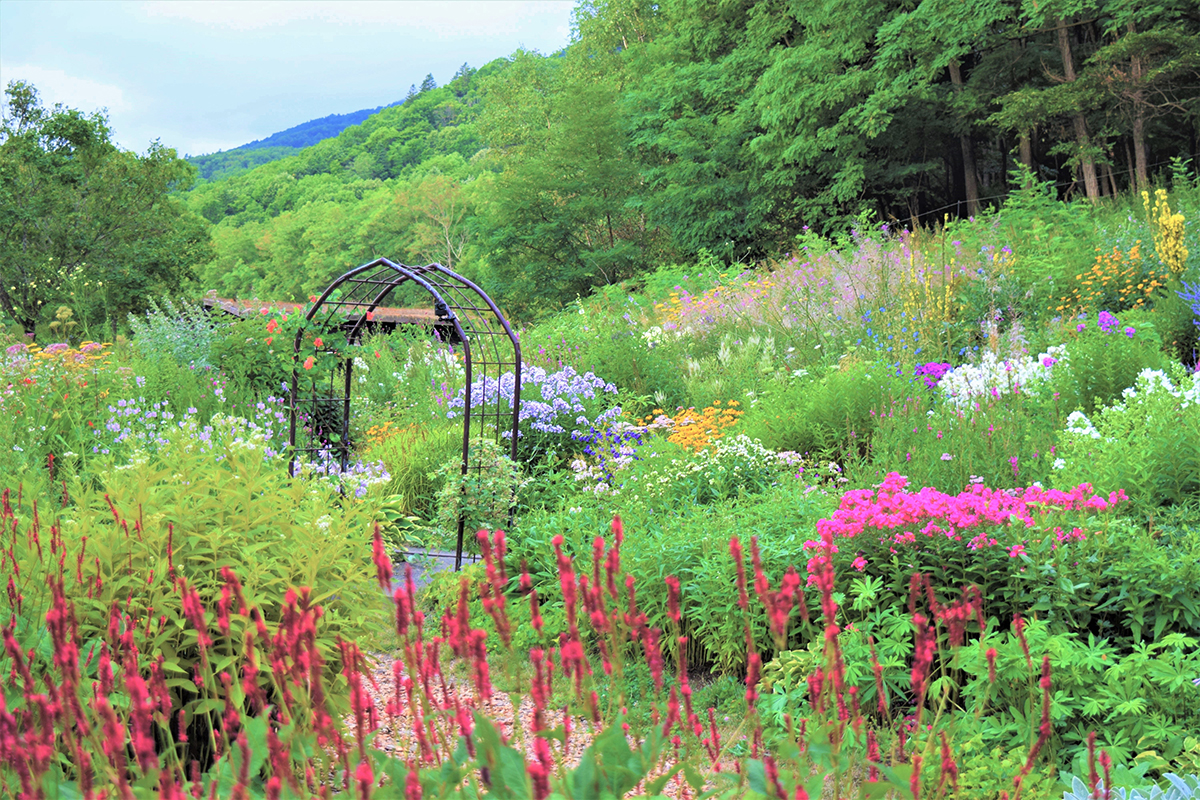
.jpg)
The rose garden here is unique, combining about 70 varieties of roses, including original and old roses, and native grasses. In autumn, rose hips, the fruit of the roses, are in abundance, adding a new charm to the garden.
・May – June: Daffodils, violas, roses, geraniums
・July – August: Campanulas, delphiniums
・September – October: Rose hips, burnet bloodworts
The New Furano Prince Hotel, where this garden is located, also has Mori no Tokei Café and Ningle Terrace, impressive spots which were also settings for TV dramas and add a fancy atmosphere to the forest.
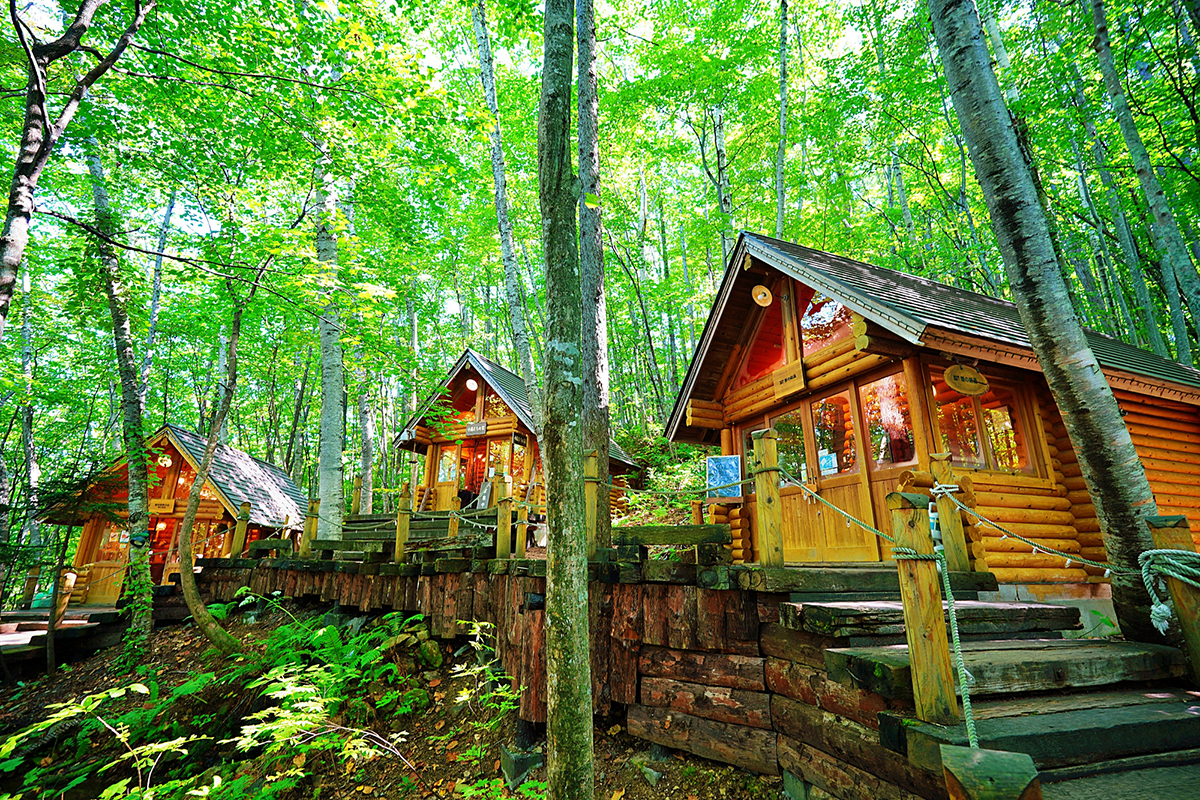
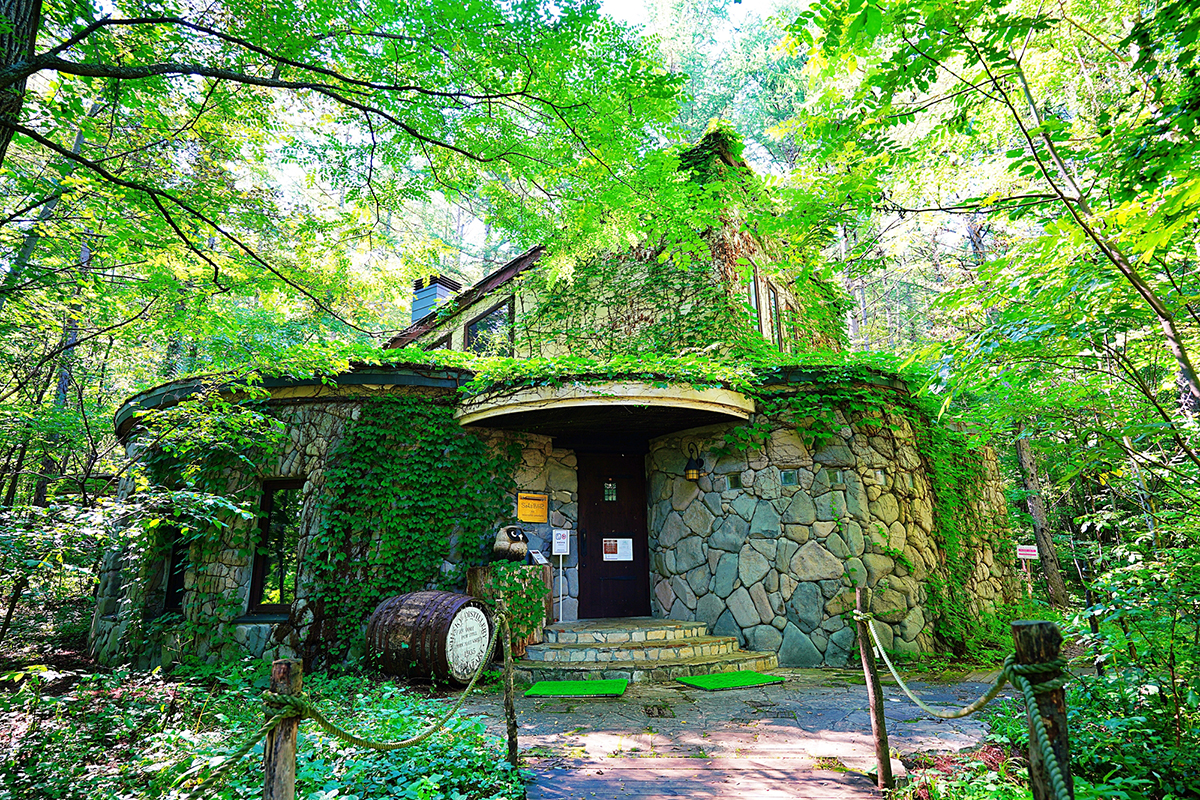
Farm Tomita, an internationally famous lavender farm with vast beautiful purple flower fields, is located near the hotel, and attracts many tourists to Furano from late June to July.
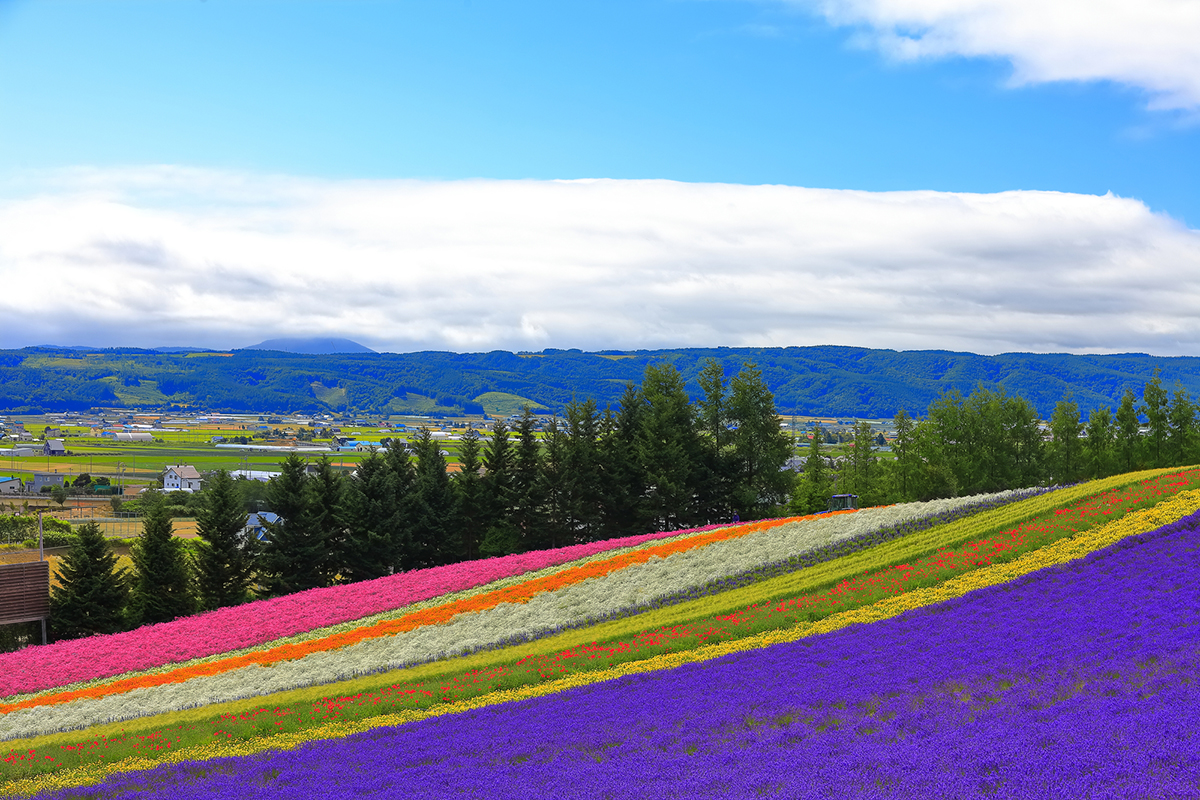
Overview of the Tokachi region
The Tokachi area is located in the southeastern part of Hokkaido. The Tokachi Plain, which occupies most of the region, is covered with large-scale fields and pastures, offering a magnificent “typical Hokkaido” landscape. The Tokachi Plain is a vast area that opens to the Pacific Ocean to the southeast, with the Daisetsu Mountains to the north and the Hidaka Mountains to the west. The area is five times the size of Tokyo and has one-thirtieth the population. Obihiro is the central city of this region.
4) Tokachi Millennium Forest
A forest that will be a legacy for humanity a thousand years from now

The Earth Garden, the centerpiece of this garden, offers a magnificent view of gently spreading lawns and hills, and you can see the Hidaka Mountains in the distance. The Hidaka Erimo Quasi-National Park, which includes this mountain range, will become a national park in the summer of 2024.
This garden was named Tokachi Millennium Forest as a statement of intent for the future: “to create a forest that will be a legacy for humanity a thousand years from now.” This garden was founded and operated by Tokachi Mainichi Shinbun, a local newspaper company in the region. The newspaper consumes a large amount of paper in its production process, so the president of the company came up with the idea of offsetting carbon dioxide emissions by planting trees to “return resources to the earth.”
The company acquired approximately 4 km² of land at the foot of the Hidaka Mountains, and began to develop the garden from 2003. At that time, the land was overgrown with 2-meter-high kumazasa bamboo grass which made it an inhospitable place. However, the sound of a murmuring river could be heard, and the Mizunara oak and Sakhalin spruce were growing so thickly that the garden’s potential was palpable.
The garden was designed by Dan Pearson, a world-renowned British gardener. He designed the gardens at Roppongi Hills (Minato-ku, Tokyo), one of Japan’s leading cultural facilities, amongst others. He says that he wanted to create a garden that would appeal to the body, as if it were embraced by the majestic topography of the land. His Earth Garden and Meadow Garden in this Millenium Forest were the first gardens in Japan to win the Grand Award, the highest award given by the Society of Garden Designers (SGD) in the UK, which recognizes outstanding garden design. It was acclaimed by the judges as “the most beautiful garden” and “the best example of garden design in the 21st century.”
The garden is dotted with contemporary artworks that blend into the landscape. Goats are raised in the Farm Garden, and chevre cheese (goat’s milk cheese), a rarity in Japan, is produced and sold.

Segway two-wheeled, self-balancing personal transporter devices are available for visitors to efficiently tour the expansive grounds. Visitors can easily explore the forest with them.

・May – June: Skunk cabbages, yellow marsh marigolds (ezo-no-rukinka)
・July – August: Japanese wood poppies (Shirane-aoi, endangered spices), Japanese giant lilies (o-uba yuri)
・September – October: Cimicifuga americana, rudbeckia flowers

5) Manabe Garden
A showcase of northern trees and plants
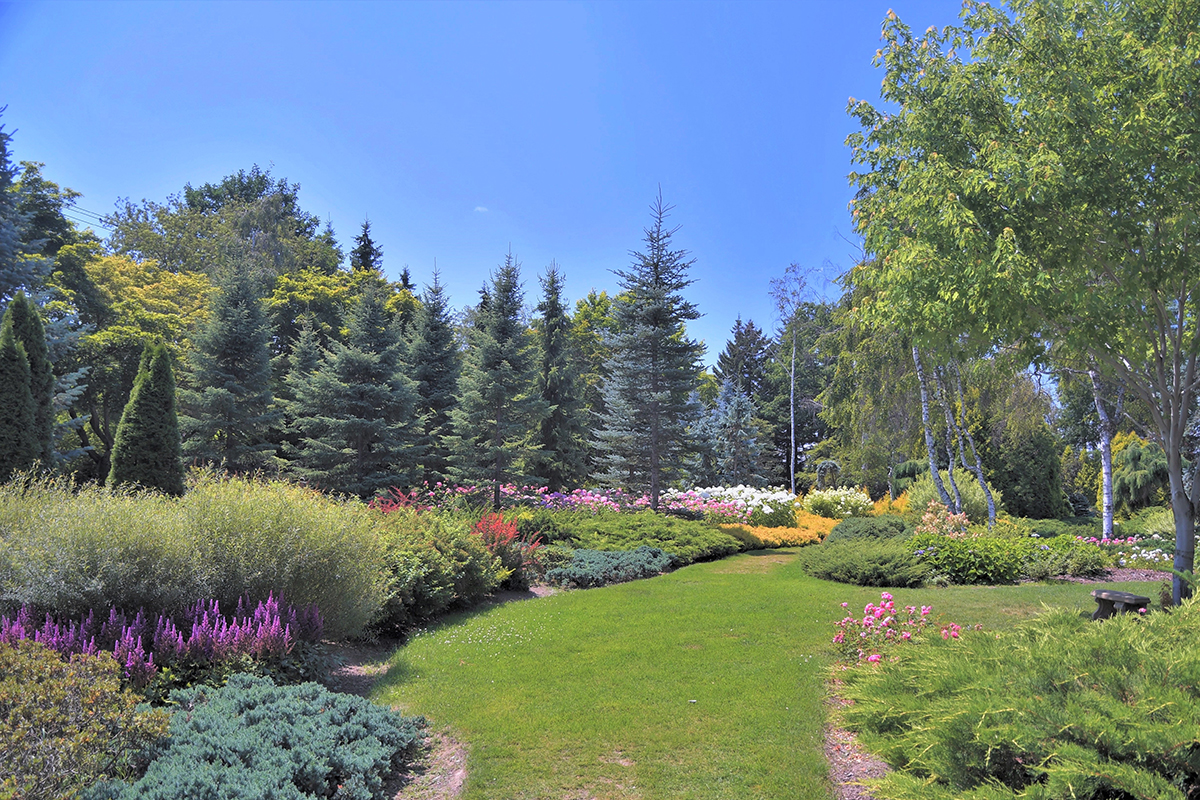
Opened in 1866, this is the first and largest conifer garden in Japan. Since then, Manabe Garden has been constantly changing and expanding with the times. It covers an area of 80,000 m² and consists of a Japanese garden, a Western-style garden, and a landscape garden.
The vast site contains 1,800 species of trees, including more than 500 species of conifers. This garden is a “showcase of trees and plants” operated by Manabe Garden, a seeds company which imports, produces, and sells trees and plants.
The first-generation owner immigrated from Kagawa Prefecture in Shikoku in 1896, shortly after the Hokkaido Development was started by the Japanese government, and began forestry operations in Tokachi.
It is a stroll garden where visitors can walk around the garden by following the signs. A slow walk will take about an hour to look around the whole area of the garden. In some areas, the natural shape of the trees has been preserved without trimming, so you can enjoy the feeling of walking through a forest of coniferous trees so large that you can look up at them. You may experience a strange feeling, as if you were lost in a fairyland maze.
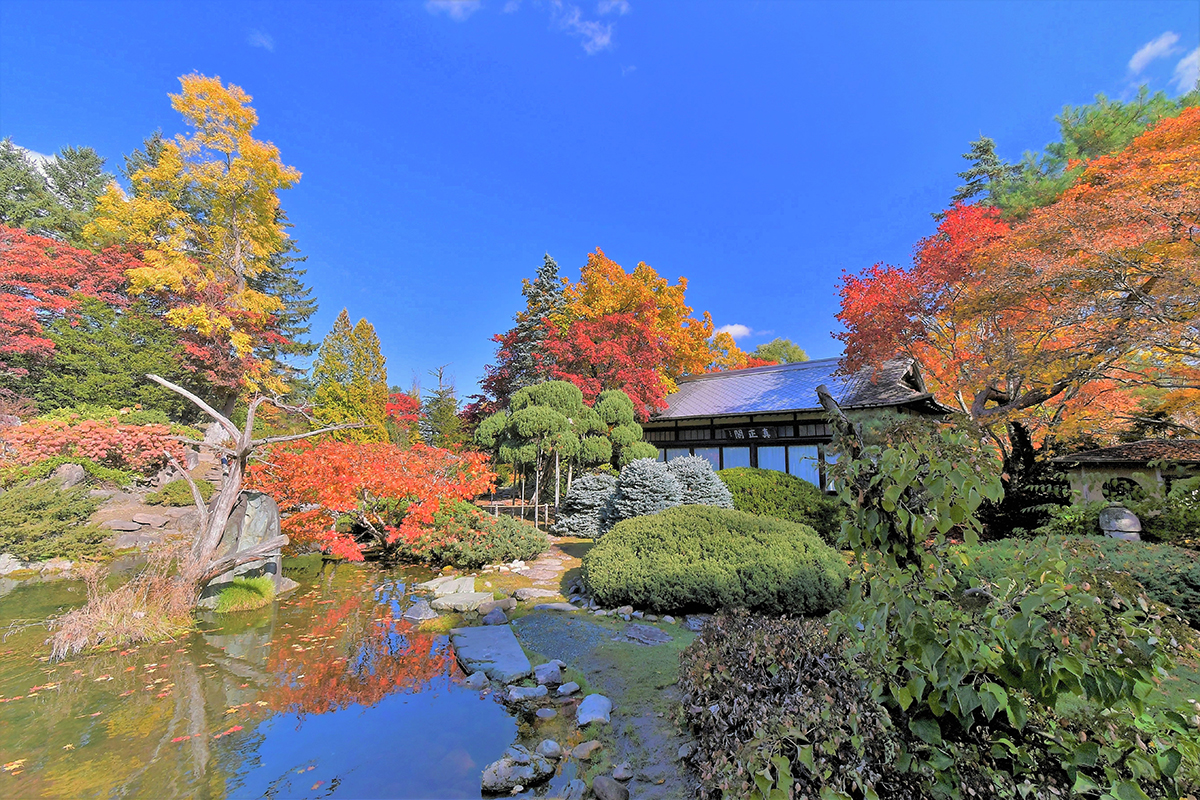
At the garden center, visitors can purchase rare plants and the latest gardening varieties. There is also a café terrace where visitors can enjoy drinks and sweets made from local ingredients after their stroll.
・May – June: Azaleas, crab apples
・July – August: Japanese meadowsweet, hydrangeas
・September – October: Autumn leaves, hydrangea paniculata
6) Tokachi Hills
A pleasant garden on a hill

Tokachi Hills opened in 2008 as a base to showcase Tokachi’s food and agriculture. A beautifully landscaped seasonal flower garden spreads out on top of a hill not far from the Obihiro downtown.

There is also a lawn for picnics and you can enjoy taking a walk with your pets. Visitors with disabilities can ride around the park on electric carts (for a fee).
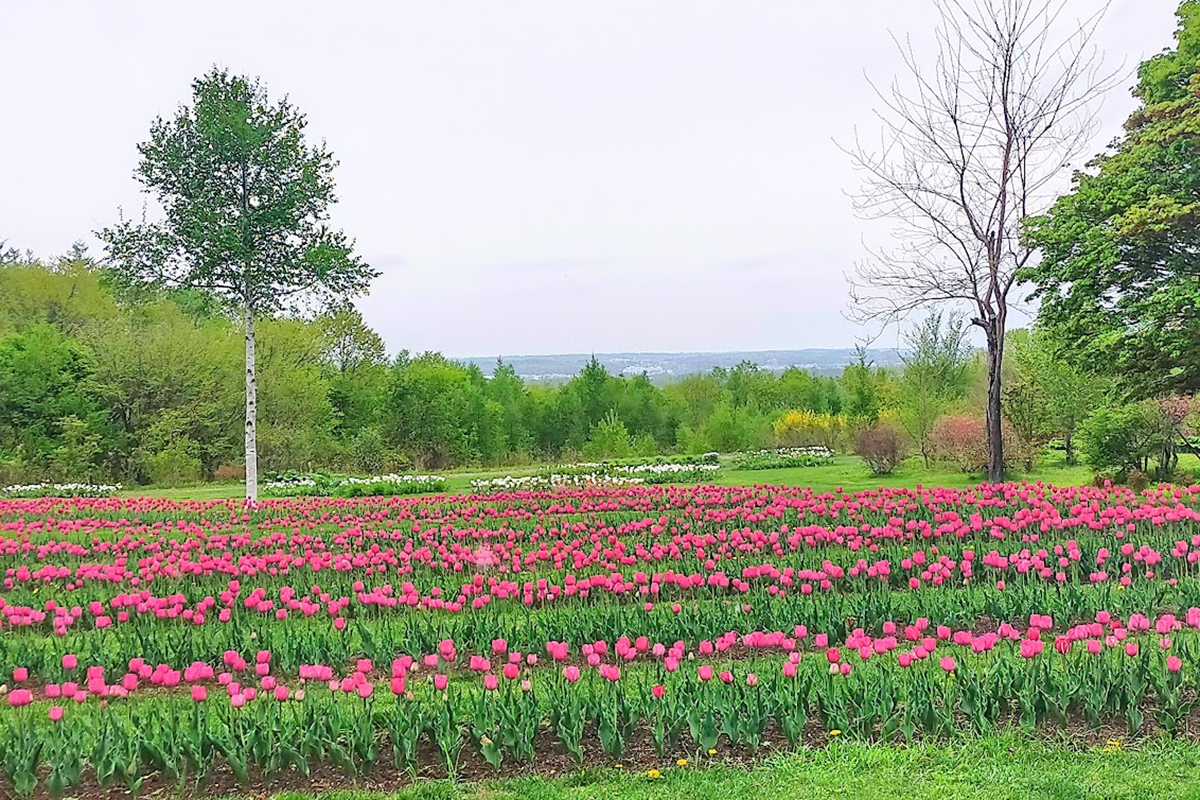
The Sky Mirror garden is like a mirror on earth reflecting the wide sky of Tokachi, where a breathtaking view of the sky and Obihiro with its seasonal flowers can be seen. Various colors of tulip are in full bloom in May, and the blue salvias are at their best from August.
The garden also has an area themed on herbs, vegetables, and fruits, where visitors can enjoy seasonal dishes and drinks made with ingredients from the garden.
The company that manages the garden handles beans and fertilizers produced in Hokkaido. The shop also sells food, sundries, and gardening supplies.
・May – June: Kushiro double cherry blossom, magnolias, azaleas
・July – August: Roses, sunflowers, blue salvias
・September – October: Autumn leaves, dahlias, Japanese bush clovers
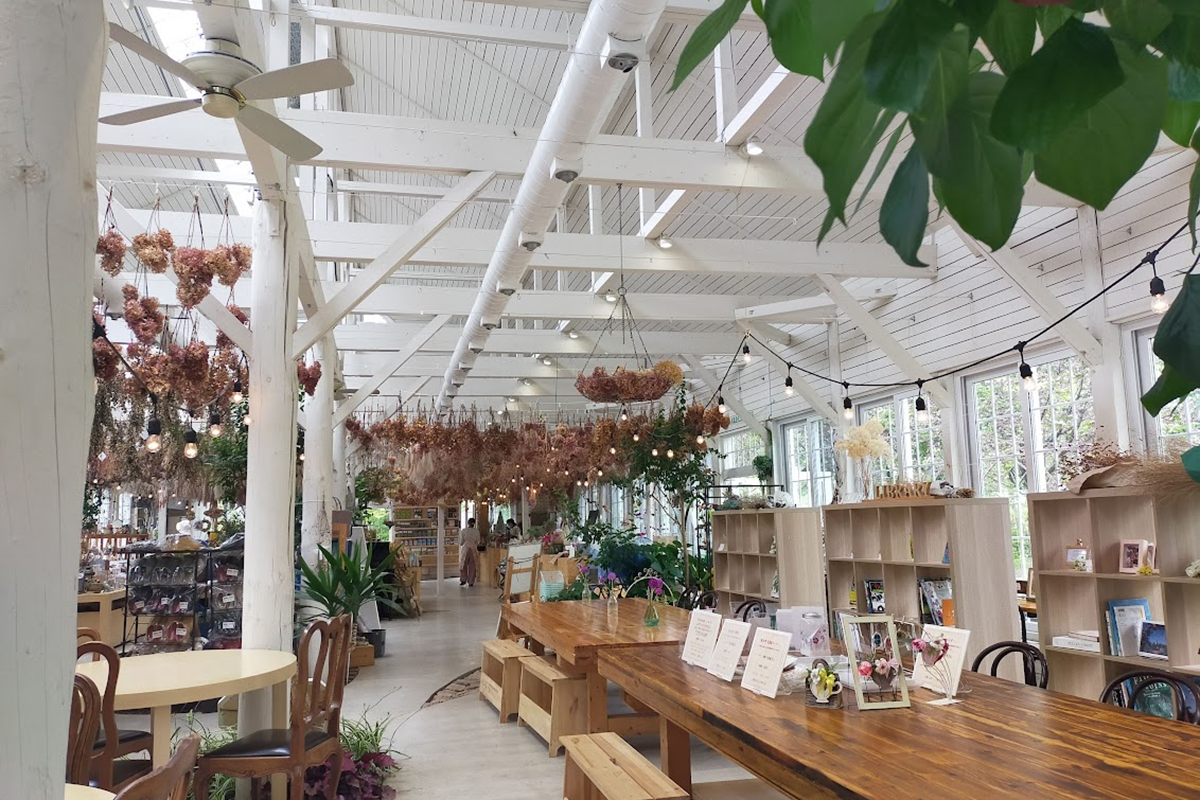
7) Shichiku Garden
The Japanese Tasha Tudor’s dream garden

Until just a few years ago, visitors to this garden would see an elderly woman wearing vivid flowery clothes working in the garden. She was the owner of this garden, Mrs. Akiyo Shichiku. She worked from early in the morning and was happy to chat with visitors to the garden and was often photographed with them. Sadly, she passed away in 2021 at the age of 94, but her beloved garden continues to delight us today.
Born and raised in Obihiro, she lost her husband in her mid-fifties, after which she cried every day. One day, her daughter said to her, “Dad loved you like the sun. Is it okay to cry forever?” Her daughter’s words made her wonder what she should do with the rest of her life. Then, she realized she wanted to make her dream flower garden! She bought 50,000 m² of land in the Tokachi area and started to make a garden, hoping to create a landscape like the fields where wild flowers bloomed in which she played as a child. At first, it was a challenge, but with the help of her family and friends she was able to create the garden of her dreams, a garden that now has come this far. Experience her dream garden in the fields of Tokachi.
Today, more than 2,500 species of flowers bloom seasonally in 22 areas within the 60,000 m² garden.
・May – June: Snowdrops, skunk cabbages, and crocuses
・July – August: Clematis, lily of the valley, irises, and roses
・September – October: Autumn leaves, chrysanthemums, tatarian asters
8) Rokka Forest
The world of Tokachi’s “six flowers“
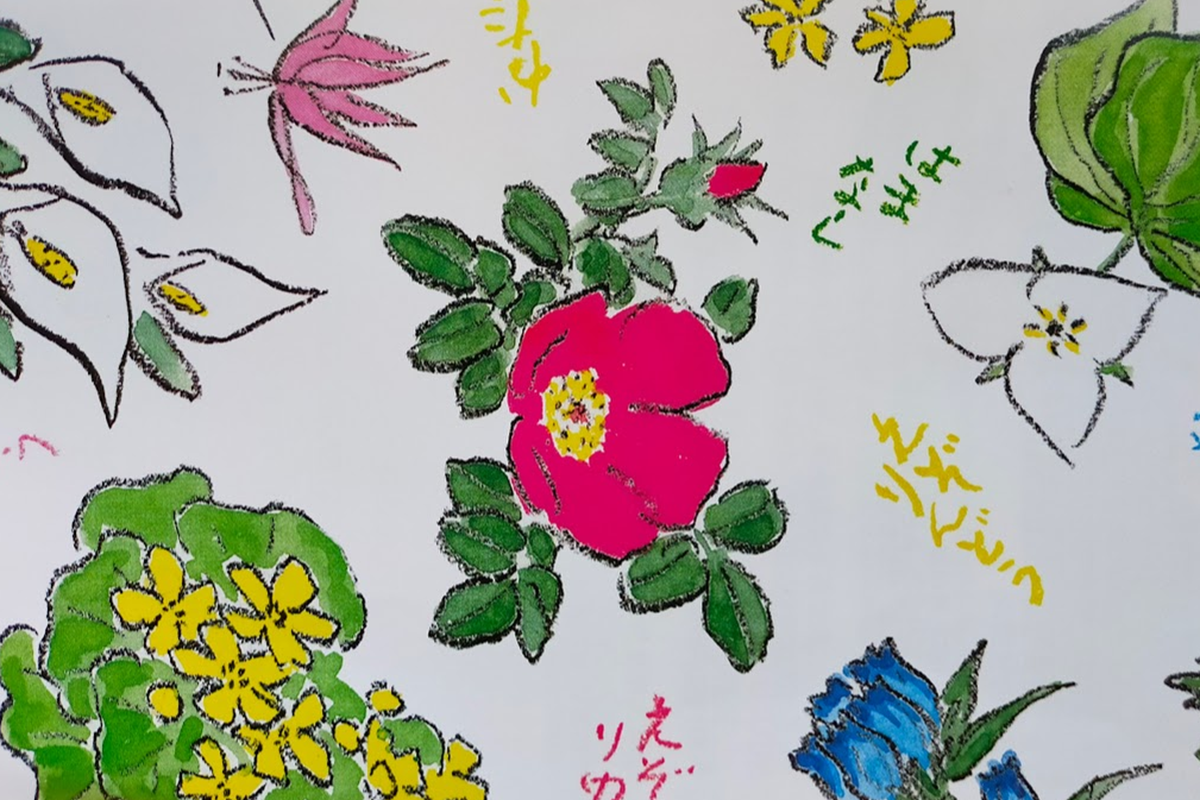
This garden is operated by Rokka-tei, a leading confectionery store in Hokkaido with its head store in Obihiro. “Rokka” is another name for snow because snow crystals have a hexagonal shape and look like flowers with six petals.
Hokkaido flowers painted by Naoyuki Sakamoto, a Hokkaido-born artist who created the design for Rokka-tei’s wrapping paper, are planted throughout the garden to embody the world of his paintings.
In particular, in various parts of the garden you can see groups of the six flowers of Tokachi: Hokkaido dogtooth violet (katakuri), yellow marsh marigold (ezo-no-rukinka),trillium camschatcense (obanano-enreiso), rugosa rose (hama-nashi), glaucidium palmatum (shirane-aoi), and Hokkaido gentian (ezo-rindo).
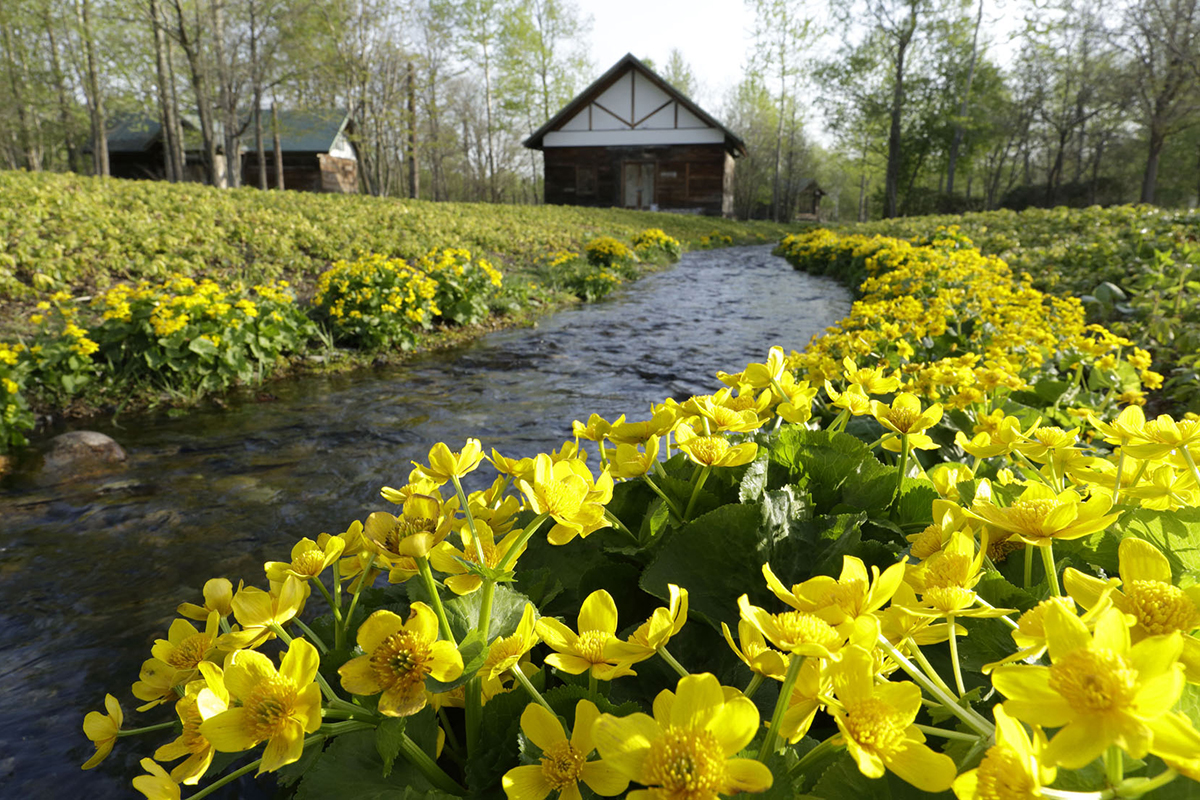
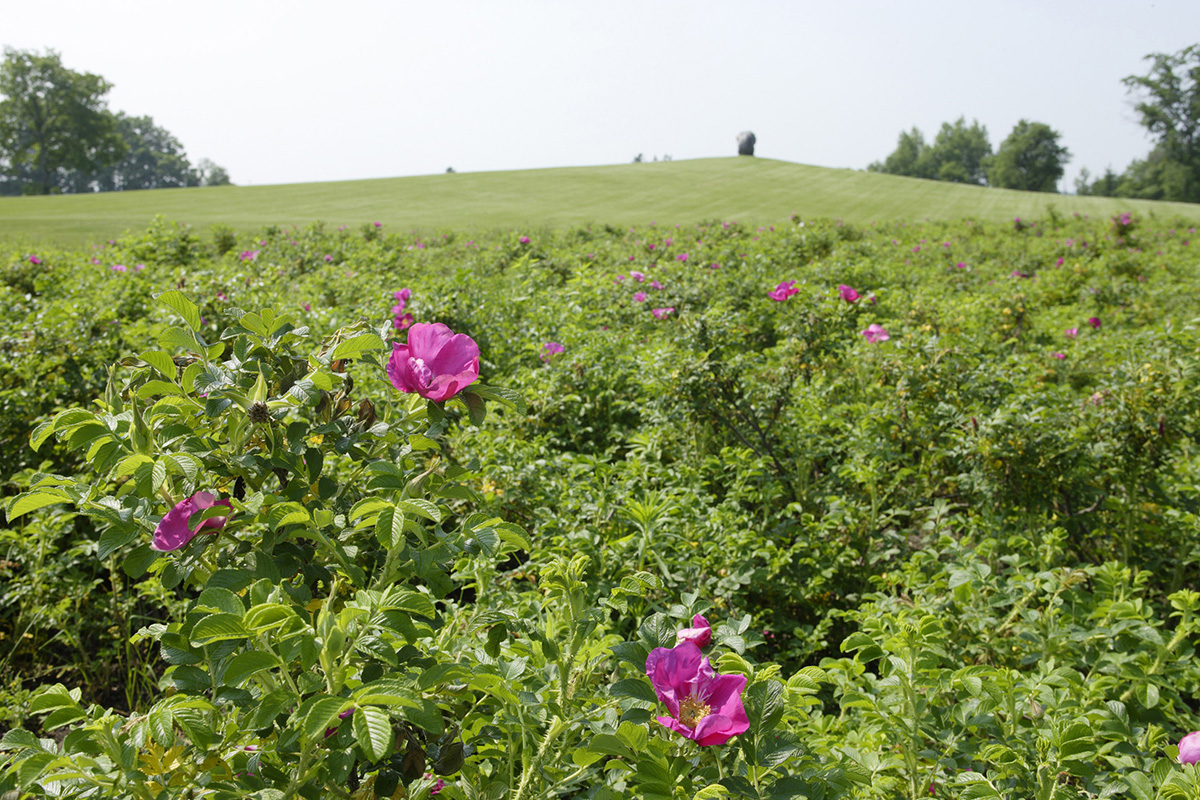
The park also has a memorial hall exhibiting paintings by Sakamoto and a café selling original Rokka-tei goods, allowing visitors to enjoy the world of Rokka-tei flowers.
4. Conclusion
How was our introduction of famous gardens in Hokkaido? Are there any gardens you would like to visit? Hokkaido’s vegetation differs from that of Honshu, Japan’s mainland, so even in the same country, the impressions a garden makes can be very different. Please come and find your favorite garden in Hokkaido.
Hokkaido is a big island, so we recommend that you plan your itinerary well in advance and take your time while visiting nearby sightseeing spots and touring the gardens. You will surely be able to enjoy Hokkaido’s new attractions to the fullest.
Hokkaido Treasure Island Travel Agency can customize an itinerary that includes a garden tour to suit your schedule and interests. Let Hokkaido Takarajima Travel Agency help you make your trip a memorable one!
